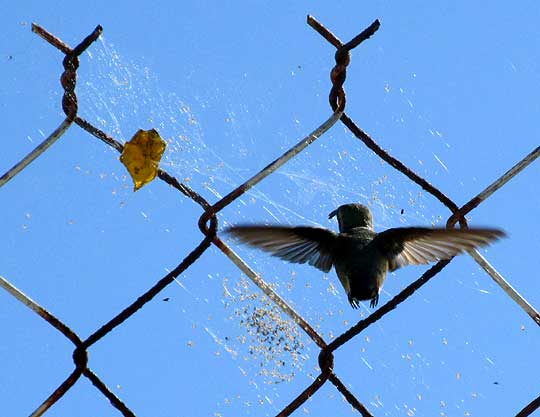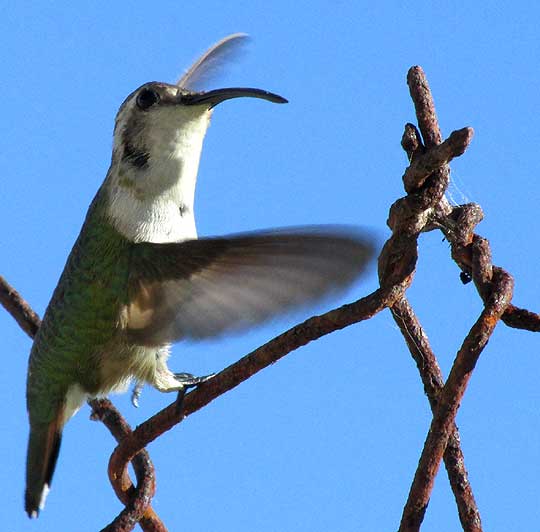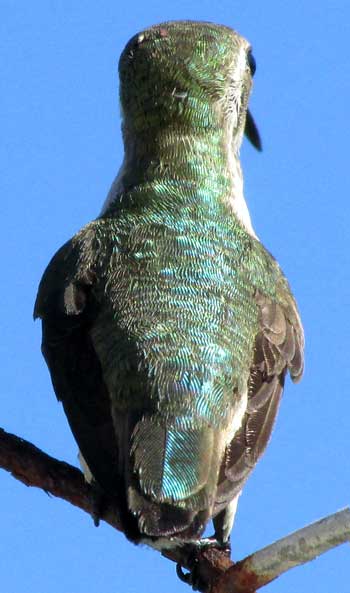Excerpts from Jim Conrad's
Naturalist Newsletter
from the November 2, 2014 Newsletter issued from Río Lagartos, on the Yucatan Peninsula's northern coast (~N21.60°, ~W88.16°), Yucatán state, MÉXICO
MEXICAN SHEARTAIL EATING SPIDERLINGS
In some places where Río Lagartos butts up against the mangroves there's a chain-link fence. In the mesh opening at the top of one fence, dozens of tiny spiderlings had hatched from their silken egg case and now clustered, suspended in a maze of silk strands spread across several mesh openings. A hummingbird was so occupied with plucking spiderlings from the cluster that I was able to stand ten feet away (3m) and take the picture shown below:

The hummer would hover for a few seconds stabbing into the cluster, then zip to a perch atop the fence or inside one of its holes, presumably deal with its mouthful of spiderlings, and then quickly return and repeat the process. Below, you can see the bird at the moment of one of its lift-offs:

This is the most commonly seen hummingbird species in and around Río Lagartos, plus it's the most interesting for visiting birders. It's the Mexican Sheartail, CALOTHORAX ELIZA, endemic only to the Yucatan Peninsula's northern coast, and with a small population in central Veracruz state, across the Bay of Campeche. If you want to add this species to your life list, you just need to come here.
The bird in our picture is a female. In the northern Yucatan, any hummer with such a curved beak and a completely white throat is a Mexican Sheartail. Species with very similar females live in other parts of Mexico, but not here. The male's throat, or gorget, is glittering rose-pink, and its tail is long, slender and very deeply forked. The female's tail is only shallowly forked. Below, you can see her green back and stubby tail.
